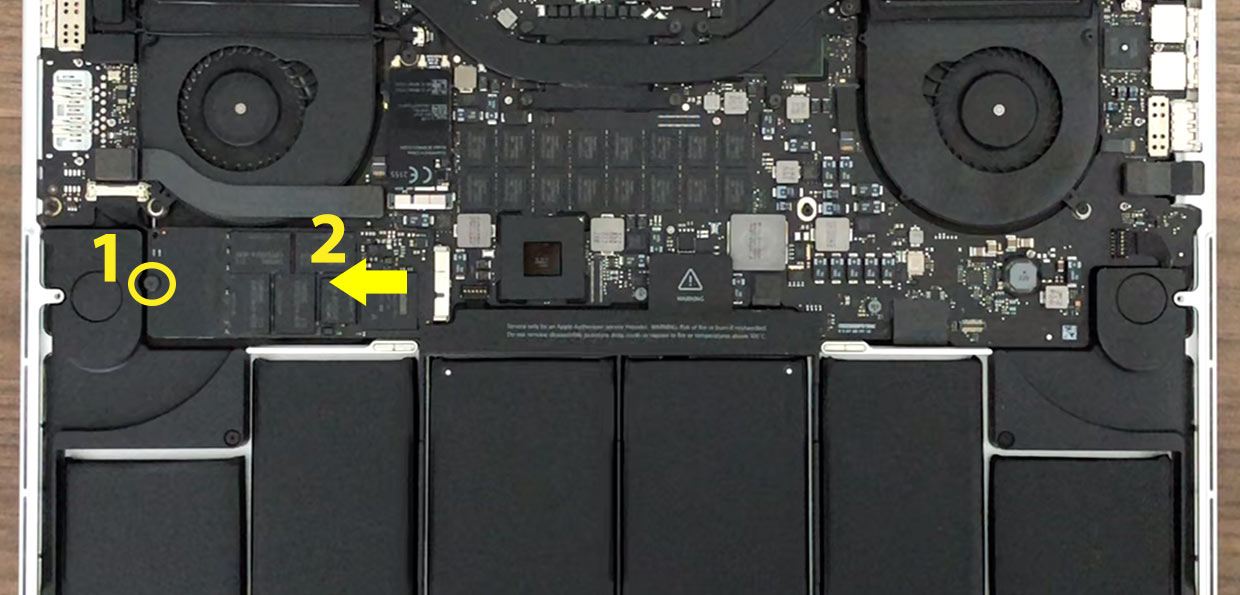

The SSD is on the left towards the middle of the motherboard The SSD in the Retina Display MacBook Pro is technically removable, it exists on a separate PCB held in by a single screw as you can see from the iFixit-supplied image below: Just like in previous designs, Apple runs its own custom firmware on its SSDs. I can only assume a TS prefix will stand for Toshiba once again. Just as before, the SM prefix stands for Samsung. I can now confirm that the PM830 is indeed what is used in Apple's SM512E SSD. In my initial look at the Retina Display MacBook Pro's storage performance I hypothesized that the SM512E part number in my review system was a drive based on Samsung's PM830 controller (the OEM version of what's used in the Samsung SSD 830). Apple is now using 6Gbps SSD controllers from both Toshiba and Samsung, allowing it to claim support for up to 500MB/s sequential read speed. Unlike previous Apple SSDs, the 2012 lineup sees a significant speed bump. We know at least one of those options is a Toshiba part, while another option is Samsung - similar to how things have worked in recent history. Despite the different, all three systems share the same selection of SSD controllers. The traditional MacBook Pro as well as the MacBook Air still refer to their storage as Solid State Drives. Apple is careful to refer to the SSD in the next-generation MacBook Pro as "all-flash storage" instead of a solid state drive. The 2012 MacBook Air, 2012 MacBook Pro and next-generation MacBook Pro all feature updated solid state storage. One of the top items on my to-do list was to hammer on Apple's new SSD. After a week in Taiwan, and a weekend in San Francisco, I'm finally back home and hard at work on the Retina Display MacBook Pro Review.


 0 kommentar(er)
0 kommentar(er)
